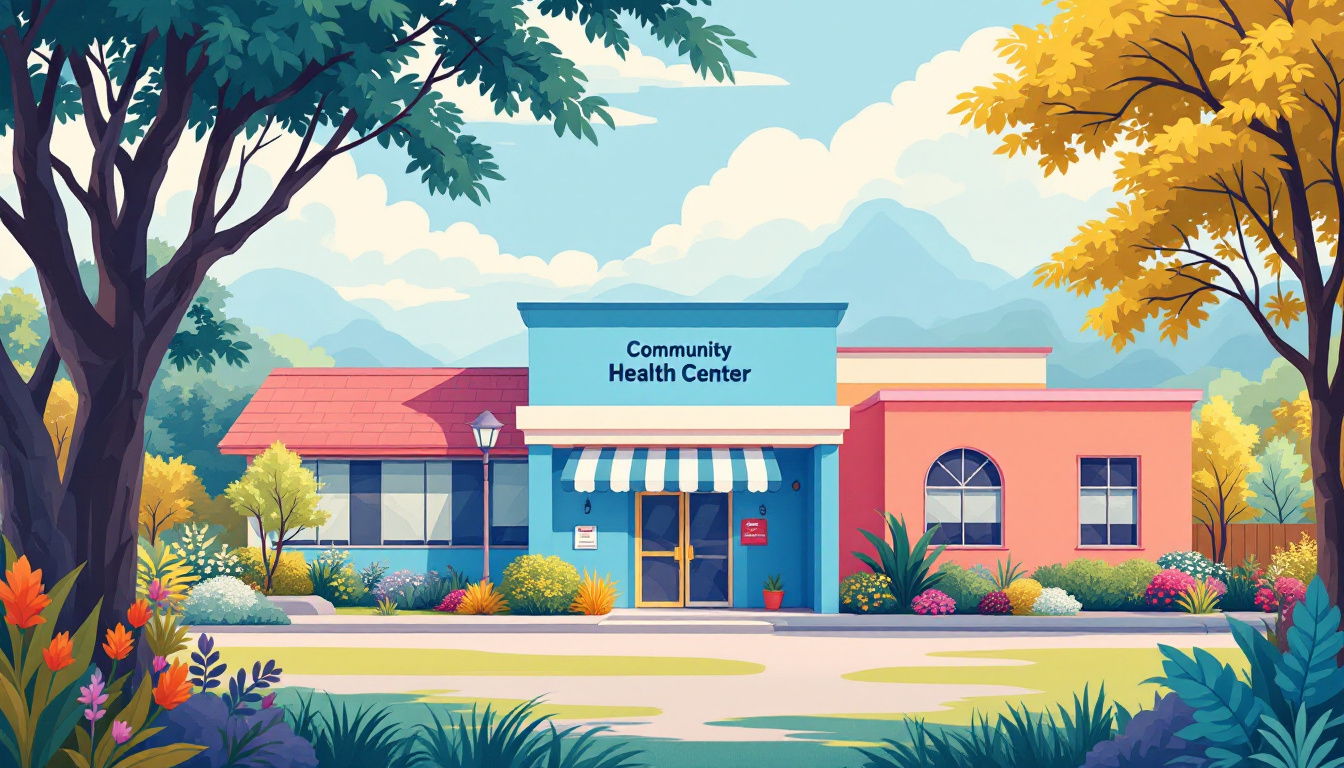Drug Addiction In Seniors
March 5, 2025
Understanding the Growing Addiction Crisis Among Older Adults


Exploring the Unique Challenges
Drug addiction among seniors is increasingly recognized as a critical public health issue, yet it's often underestimated and underdiagnosed. This demographic faces unique vulnerabilities and challenges, including age-related physiological changes and social factors, which contribute to the prevalence and complexity of substance use disorders (SUDs). In this article, we delve into the current state of drug addiction in older adults, examining common substances abused, the consequences of misuse, and the available treatment and support options.
Prevalence and Commonly Abused Substances

Statistics on Substance Abuse in Seniors
Nearly 1 million adults aged 65 and older are affected by substance use disorder (SUD), showcasing a significant public health concern. Current statistics indicate that about 4% of seniors experience SUDs, with alcohol and prescription medications being the most commonly abused substances in this demographic. Alarmingly, 17% of older adults may misuse alcohol or prescription drugs, reflecting a growing crisis. The increased admissions to treatment facilities, rising from 3.4% to 7.0% between 2000 and 2012, further underscores the escalating issue.
Commonly Abused Substances
Older adults often misuse substances for various reasons. The most common substances abused include:
- Alcohol: Approximately 65% of seniors engage in high-risk drinking, with over 10% participating in binge drinking.
- Prescription medications: Opioids and benzodiazepines, frequently used for managing pain and anxiety, pose significant risks when misused, with one-third of older adults exhibiting symptoms of misuse.
- Illicit drugs: Use among seniors is on the rise, with increasing reports of marijuana and other non-prescribed substances in this age group.
Influence of the Baby Boomer Generation on Substance Use
The baby boomer generation, known for their more lenient attitudes toward alcohol and drug use, has significantly impacted the rates of substance abuse among older adults. Their historical exposure has contributed to trends of increased alcohol and prescription medication use, indicating a complex relationship between generational behaviors and substance misuse.
Overall, addressing substance abuse in older adults is crucial, particularly given the unique challenges of this demographic, warranting the development of tailored treatment programs to meet their specific needs.
Risks and Consequences of Substance Use in Seniors

Metabolism and Sensitivity to Drugs in Older Age
Older adults often face unique challenges regarding substance use due to the natural aging process. As individuals age, their bodies metabolize drugs and alcohol more slowly. This slower metabolism can lead to heightened sensitivity to substances, resulting in increased risk for adverse effects and potential health complications.
Even small amounts of alcohol can produce intoxicating effects, compared to younger adults who might require considerably higher doses. The recommended limit for alcohol consumption in this demographic is thus set lower, at no more than seven alcoholic drinks per week.
Health Complications and Interaction with Existing Medical Conditions
Substance use can exacerbate existing medical issues in older adults, such as mood disorders, lung diseases, and heart conditions. Moreover, alcohol misuse is particularly concerning due to its potential to worsen cognitive function and physical health, increasing the risk for accidents and falls.
Risks of Drug-Drug Interactions
With over 80% of seniors taking at least one prescription medication daily, the likelihood of drug-drug interactions rises significantly. This issue is particularly exacerbated by polypharmacy, the simultaneous use of multiple medications. Every additional drug increases the chance of harmful interactions, which can lead to serious health complications.
Consequently, older adults may experience overlapping symptoms that can complicate the identification of substance use disorders, further obscuring the magnitude of this growing health concern.
Role of Alcohol and Prescription Drugs in Senior Substance Abuse

What role do alcohol and prescription drugs play in substance use disorders among seniors, and how widespread is their use?
Alcohol and prescription drugs are significant contributors to substance use disorders (SUD) among seniors. Nearly 1 million older adults, aged 65 and older, live with a substance use disorder. Alarmingly, 65% of this age group engages in high-risk drinking, marking a substantial public health issue. From 2001 to 2013, admissions for alcohol use disorders in older adults increased by an astounding 107%, reflecting the growing prevalence of alcohol misuse.
In addition to alcohol, prescription drugs are commonly misused by older adults. Over 80% of seniors consume at least one prescription medication daily, leading to a higher likelihood of polypharmacy, which poses serious risks. Particularly concerning is the misuse of opioids and benzodiazepines; more than 25% of older adults who misuse these medications report suicidal thoughts. The slow metabolic rate of older adults makes them particularly vulnerable to adverse effects, further complicating their health issues.
High-risk drinking behaviors among seniors
High-risk drinking behaviors in seniors are defined as consuming more than seven alcoholic drinks per week or exceeding three drinks on a single day. Alarmingly, about 10.7% of seniors reported binge drinking in the last month. These statistics highlight the urgency of addressing alcohol use, as it not only impacts physical health but also can exacerbate cognitive decline and mental health issues.
Impact of polypharmacy on substance misuse
Polypharmacy presents unique challenges for older adults, leading to an increased risk of drug interactions and unintentional misuse. With many older adults taking multiple medications to manage chronic health conditions, errors such as taking excessive amounts or combining medications with alcohol can occur frequently. As a result, health professionals must be vigilant in screening for substance misuse and tailoring interventions to this vulnerable population.
| Topic | Fact | Implication |
|---|---|---|
| Alcohol Usage | 65% of seniors engage in high-risk drinking | Increased potential for health complications |
| Prescription Drug Misuse | 80% of older adults on medications; over 25% misuse opioids or benzodiazepines | Heightened risk of adverse effects and mental health issues |
| Binge Drinking | 10.7% report binge drinking in the last month | Signifies a concerning trend requiring intervention |
Challenges in Identifying and Treating Addiction in Seniors

Challenges in Diagnosis and Treatment Engagement
Identifying substance use disorders (SUDs) in older adults presents unique challenges. Symptoms often overlap with common aging processes, such as memory issues and mood swings, making it difficult for family members and healthcare providers to distinguish between normal aging and possible addiction. Additionally, many seniors are reluctant to seek help due to fear of judgment or a belief that they should manage their problems independently. This reluctance can lead to underdiagnosis and a lack of appropriate treatment interventions.
The Role of Stigma and Denial Among Seniors
Stigma surrounding addiction can significantly impact older adults' willingness to acknowledge their substance use problems. Cultural attitudes that associate shame with drug and alcohol use often prevent seniors from seeking help. Furthermore, many older adults feel guilt and denial regarding their substance use, which complicates their ability to address these issues effectively. Engaging families in the recovery process can help bridge some of these gaps and encourage seniors to seek support.
Effective Treatment Approaches
Treatment for addiction in seniors requires specialized methods that consider their unique physical and mental health challenges. Cognitive behavioral therapy, group-based therapy, and motivational enhancement therapy have been shown to be effective. Tailored programs that cater to older adults, addressing underlying issues like chronic pain and emotional distress, can lead to successful recovery outcomes. Collaboration between various healthcare professionals is essential to provide holistic support for this demographic.
Support and Resources for Seniors Struggling with Addiction

What are the common signs of drug use in individuals?
Common signs of drug use in individuals can be categorized into physical, behavioral, and psychological indicators.
- Physical Indicators: Look for signs such as lethargy, bloodshot eyes, runny nose, irregular sleep patterns, weight changes, and poor personal hygiene.
- Behavioral Indicators: These may include shifts in social circles, poor academic or work performance, secretive behavior, and neglect of responsibilities.
- Psychological Indicators: Individuals may experience paranoid thoughts, a negative self-image, lack of motivation, and feelings of apathy.
Recognizing these signs early can facilitate timely intervention and support for those struggling with substance use issues.
Assistance Provided by Helplines and Local Support Groups
Seniors facing substance use disorders can turn to helplines such as SAMHSA’s National Helpline. This 24/7 resource offers confidential support, helping connect older adults with local treatment facilities and support groups. This can be pivotal, particularly for individuals who may feel isolated or uncertain about their next steps in recovery.
Importance of Tailored Treatment Interventions
Older adults often require specialized treatment approaches that cater to their unique medical and social needs. Effective interventions may include cognitive behavioral therapy, group settings with peers, or case management services, ensuring they receive comprehensive care tailored to their age and health conditions.
Family Involvement in Recovery Efforts
Family support plays a crucial role in the recovery of seniors struggling with addiction. Engaging family members can create a supportive environment where older adults feel understood and encouraged, significantly improving their chances for successful treatment outcomes.
Addressing a Growing Concern
As the population ages and the demographic landscape shifts, addressing substance use disorders among seniors becomes increasingly important. Understanding the unique challenges seniors face—such as slower metabolism, social isolation, and chronic health conditions—is critical in providing effective treatment and support. Through increased awareness, tailored treatment programs, and reducing stigma, we can ensure that older adults receive the care they need to manage and overcome addiction.
References
- Substance Use in Older Adults DrugFacts
- SAMHSA's National Helpline
- Addiction In The Elderly Population
- Substance Abuse in the Elderly
- Substance Use Disorder in Older Adults: Mini Review - PMC
- Prescription Drug Abuse in the Elderly - FamilyDoctor.org
- Substance Use and Addiction in Older Adults
- Substance Abuse & Seniors: How Addiction Impacts Older Adults ...
- Older Adults - Office of Addiction Services and Supports
Latest Blog

March 5, 2025
Heart Healthy Exercises For Seniors
Enhancing Cardiovascular Wellness Among Older Adults

March 5, 2025
Benefits Of Yoga For Seniors
Exploring the Life-Enhancing Power of Yoga for Older Adults





















































.jpeg)









































































































































































































.avif)






















































.jpeg)

































































.jpeg)














.jpg)









































.jpeg)









































































.avif)




.avif)

















































.avif)







































































































































































